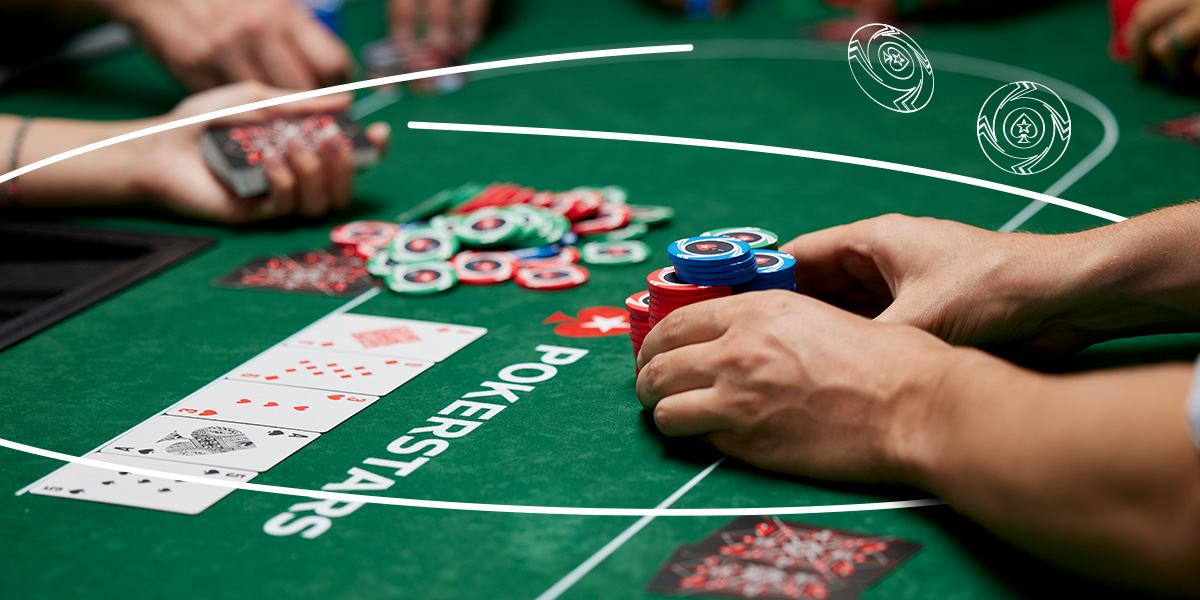3 Tips To Get The Most Out Of Your Flopped Sets
Just under 12% (11.8% to be exact).
Those are the odds of flopping a set when you hold a pocket pair, and boy, is it sweet when you do.
Assuming the flop is somewhat safe – i.e., not monotone or three cards to a straight – then seeing a flop and hitting a set is one of the best feelings in poker. But now the work really begins.
You’ve got to use it to gain as many chips as you can.
But how? What are the best ways to play flopped sets in the most common scenarios?
Here, we’ve got three tips to help you get the most out of your flopped sets.

C-Betting in position
Let’s say you’ve opened from middle position with 7♠ 7♣ and the big blind has defended. This means you’re playing in-position on every street from the flop onwards.
But wait, it gets better. The flop comes K♥ 7♦ 2♠ – an absolute dream. You essentially have the nuts here because the player in the big blind would almost always 3-bet with pocket kings, which rules that hand out. Plus, there are no flush or straight draws on board, so you don’t really have many turn cards to worry about.
It checks to you. What are you going to do?
You might be considering checking back for deception, hoping your opponent begins to bluff or bet on the turn. That’s not a bad idea, especially if your opponent tends to over-bluff.
But here’s a better idea: Bet!
You have a very strong hand (the virtual nuts in this instance) so you should want to begin building a big pot right away. Obviously, it’s a shame when your opponent gives up immediately, but in those cases, you probably weren’t ever going to get much from them anyway.
If they have paired a king, however, or better yet hit two pair, they’re very likely to raise you and this is where you can begin to plan towards getting all of the money in.
If your opponent is aggressive and bluffs a lot, they might even decide to raise your continuation bet (c-bet) with complete air, hoping you’ve missed the flop.
So, as a rule of thumb, always c-bet your flopped sets when you were the pre-flop raiser and you’re in position. That’s how you win a big pot.

Consider ranges when out of position
Now let’s move on to another common scenario: defending the big blind with a pocket pair.
The cutoff opens and you defend with 4♠ 4♥ and the flop falls Q♦ 4♣ 7♥ – beautiful stuff.
You can’t feel quite as confident as you did in the first scenario; after all, your opponent is very capable of having pocket queens here and coolering you with set over set. But before you start fearing the worst, start with a check and see how your opponent proceeds. So far, so standard.
They c-bet and now it’s back to you. There are only three combinations of pocket queens your opponent could have, so it’s highly likely you have the best hand here. So, what’s the best course of action?
Check-raise!
Again, you want to build the pot right now with so much equity, hoping to get paid when your opponent has an overpair or top pair.
Consider the ranges in this spot. Your opponent is more likely to have strong queens here (i.e., a queen with a good kicker, such as an ace or a king) than you, as you have a wider range in the big blind when you call. So, while it would again be a shame if they folded right away, you also have a great chance of winning a big pot if they have such a holding. They might think you’re just raising with a hand like Q♣ 5♣ (top pair and a backdoor flush draw).
Check-raising with your flopped sets should be the general rule of thumb here.

Trapping wit passive play
In this final scenario, let’s say you open on the button with 8♠ 8♥ and the player in the big blind 3-bets, which you call.
The flop comes Q♦ 8♣ 4♠ and once again, you’ve flopped yourself a set. You’re in position here, so expect your opponent to c-bet frequently. Now consider how you should respond.
You might think you should always raise here, but that looks incredibly strong after the action we’ve seen so far.
Instead, you can just call here. Your opponent has the range advantage when you only call the 3-bet, meaning they’re more likely to have the strongest hands (in this situation, that’s pocket queens, pocket kings, pocket aces, and ace-queen).
By just calling, you not only keep your opponent’s weaker hands in the pot, but you give them rope to continue betting thinly for value or bluffing on the turn. The pot will have swelled by this point and depending on the stack-to-pot ratio, it should be possible to get all the money in on the river if they continue to fire on the turn.
Just calling the flop c-bet keeps all of your weaker hands in your range (for example, you might have called with just an eight for middle pair) so your opponent is able to continue betting comfortably when they have something.
If a dangerous-looking card hits the turn – one that makes the board wet, such as a nine, ten or jack, or a second diamond, club, or spade – then you can always shove over the turn bet to deny equity on the river.
Condimentum Nibh
Donec sed odio dui. Cras mattis consectetur purus sit amet fermentum. Vestibulum id ligula porta felis euismod semper. Curabitur blandit tempus porttitor.












